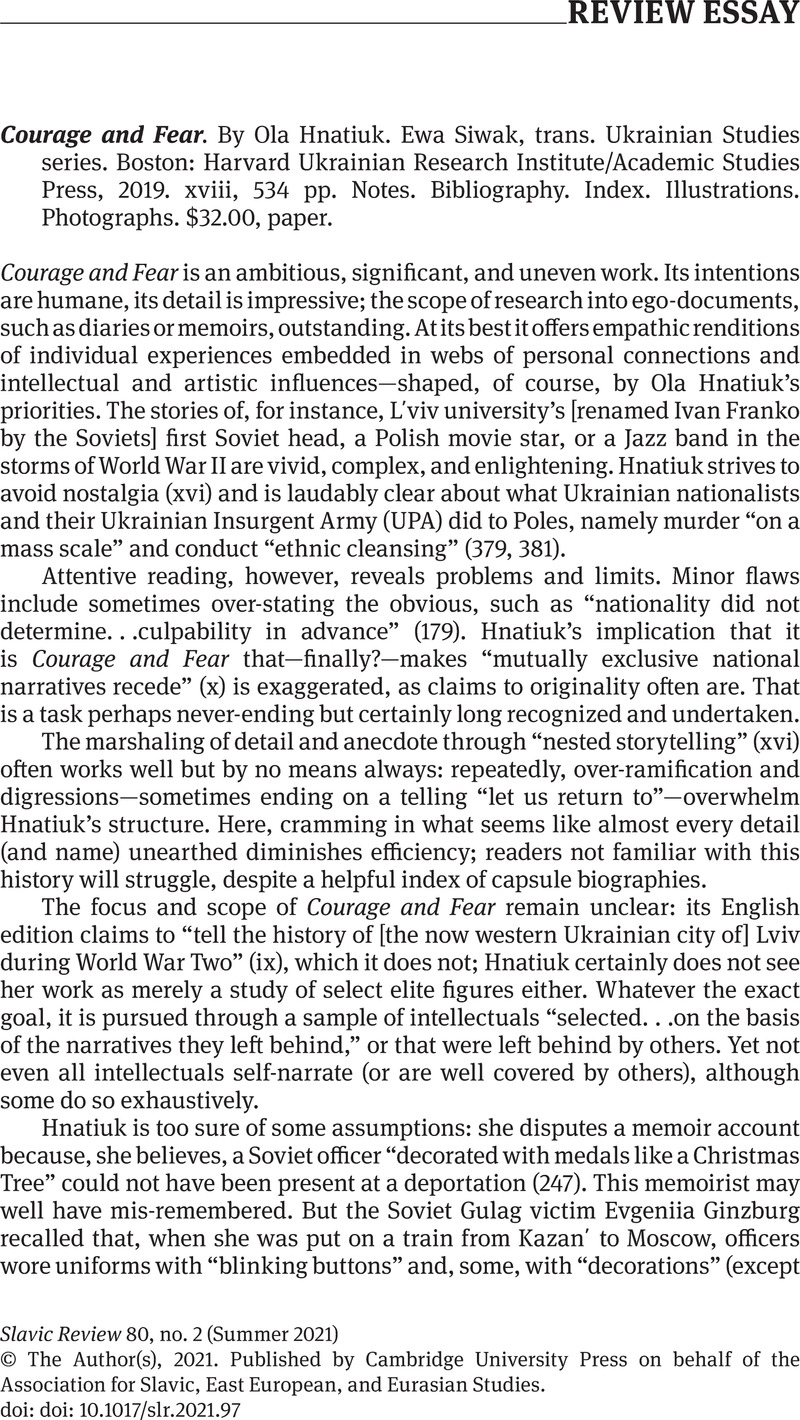No CrossRef data available.
Published online by Cambridge University Press: 06 September 2021

1. Ginzburg, Evgeniia, Krutoi Marshrut (Moscow, 2007), 126Google Scholar.
2. For instance, Rudling, Per Anders, “‘They Defended Ukraine’: The 14. Waffen-Grenadier-Division der SS (Galizische Nr. 1) Revisited,” Journal of Slavic Military Studies, vol. 25, no. 3 (July-September 2012): 338CrossRefGoogle Scholar; Khromeychuk, Olesya, “Ukrainians in the German Armed Forces During the Second World War,” History: The Journal of the Historical Association, vol. 100, no. 5 (343) (December 2015): 720CrossRefGoogle Scholar.
3. Hirsch, Francine, Empire of Nations: Ethnographic Knowledge and the Making of the Soviet Union (Ithaca, 2005)Google Scholar; Slezkine, Yuri, “The USSR as a Communal Apartment, or How a Socialist State Promoted Ethnic Particularism,” Slavic Review, vol. 53, no. 2 (Summer 1994): 414–452CrossRefGoogle Scholar.
4. Rich, David Alan, “Armed Ukrainians in L΄viv: Ukrainian Militia, Ukrainian Police, 1941 to 1942” Canadian-American Slavic Studies, vol. 48, no. 3 (January 2014): 271–87CrossRefGoogle Scholar; Finder, Gabriel N. and Prusin, Alexander V., “Collaboration in Eastern Galicia: The Ukrainian Police and the Holocaust,” East European Jewish Affairs, vol. 34, no. 2 (August 2004): 96CrossRefGoogle Scholar.
5. Khromeychuk, “Ukrainians in the German Armed Forces,” 711–13.
6. Lower, Wendy, “Pogroms, Mob Violence and Genocide in Western Ukraine, Summer 1941: Varied Histories, Explanations and Comparisons,” Journal of Genocide Research, vol. 13, no. 3 (September 2011): 217–46CrossRefGoogle Scholar; Himka, John-Paul, “The Lviv Pogrom of 1941: The Germans, Ukrainian Nationalists, and the Carnival Crowd,” Canadian Slavonic Papers, vol. 53, no. 2-4 (June 2011): 209–43CrossRefGoogle Scholar; Struve, Kai, “The OUN(b), the Germans, and Anti-Jewish Violence in Eastern Galicia during Summer 1941,” Journal of Soviet and Post-Soviet Politics and Society, vol. 6, no. 1 (2020): 205–235Google Scholar [a summary of idem, Deutsche Herrschaft, ukrainischer Nationalismus, antijüdische Gewalt. Der Sommer 1941 in der Westukraine (Berlin, 2015)].